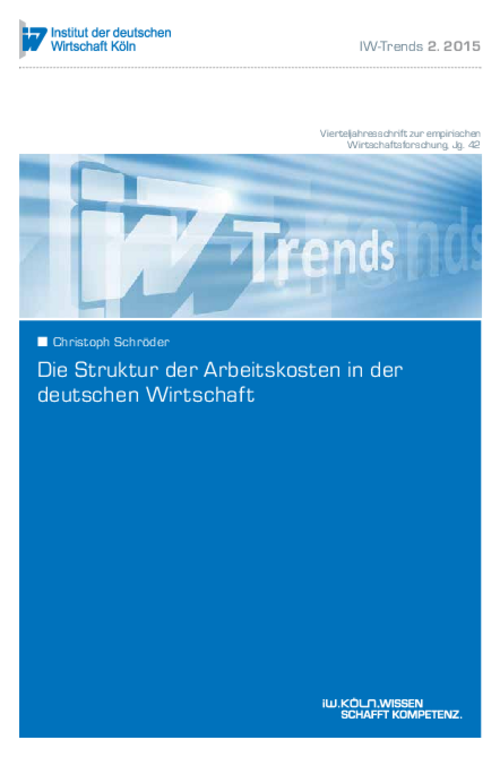In 2014 labour costs per full-time employee in manufacturing industry increased in western and eastern Germany by 2.4 per cent and 4.1 per cent respectively, making cost dynamics in both parts of the country considerably stronger than in the previous year. At the same time, productivity stagnated, resulting in a noticeable deterioration in cost competitiveness. With a cost level of 41,900 euros, eastern German manufacturing retains its cost advantage of a third over its western counterpart (62,920 euros). In the services sector there is a wide gap between the transport (44,100 euros) and trade (45,780 euros) sectors and financial service providers (84,580 euros). At 69,330 euros, business services also incur considerably higher costs than manufacturing.

The Structure of Labour Costs in the German Economy
IW-Trends


Christoph Schröder: Die Struktur der Arbeitskosten in der deutschen Wirtschaft
IW-Trends

More on the topic

The 9th IW Survey of Further Training
In 2016 some 85 per cent of companies in Germany were active in continuing vocational training, using a broad mix of methods.
IW
Has the German Economy Reached its Limit?: Skilled Labour Shortages as a Brake on Growth
The German economy is performing significantly better than was expected in the first few months of this year. During the course of 2017, certain early fears – especially of a weakening of the global economy due to increasing protectionism – have proved ...
IW